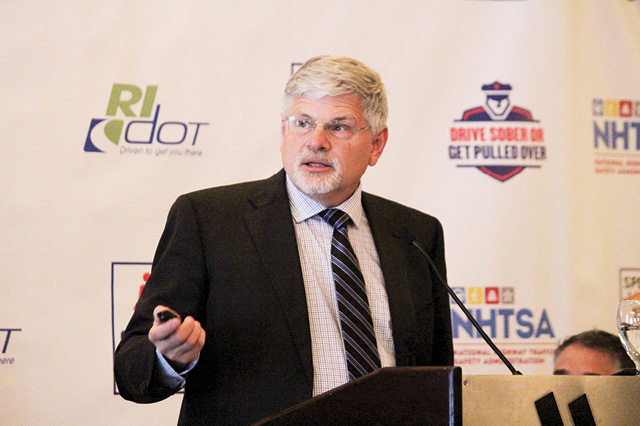The next time you’re a few minutes late for work, you could blame it on distracted drivers.
After all, the excuse is backed by science.
Distracted drivers can slow down commutes by as much as 10 percent, according to David Strayer, a cognitive neuroscientist at the University of Utah. His research for the AAA Foundation for Traffic Safety has found that infotainment systems and electronic devices can distract drivers even when their hands are on the steering wheel and their eyes are straight ahead.
Strayer recently shared his research at a distracted driving and pedestrian safety summit held in Providence and hosted by the Rhode Island Department of Transportation.
In particular, he highlighted what he calls a “technology hangover” – when it can take drivers up to 27 seconds to regain their situational awareness after using voice commands to dial a phone, change music or send a text message. That’s why texting at a stop sign or a red light isn’t as safe as it might seem. He also reminded attendees that hands-free devices can be distracting.
In an interview with Your AAA, Strayer said he enjoys cognitive distraction research because it isn’t something you can see with the naked eye.
“I can see if someone’s eyes are off the road,” he said. “That’s a lot easier to study, and it clearly has hazards, but it’s really interesting to me to be able to look at what happens when the brain gets distracted.”
Drivers can’t practice away cognitive distractions as they get familiar with their vehicles, he said, noting that his research has made him extra cautious around stop signs and traffic signals.
“Especially when the light turns green, I don’t hit the gas right away,” Strayer said. “I look to make sure the intersection is clear because I know there are people who might just blast right through the intersection. They may not even see the red light.”
What do you do to avoid distractions behind the wheel? Let us know in the comments.
For more on Strayer’s research, visit the AAA Foundation for Traffic Safety.















